Usually, when someone mentions Soviet architecture the first things that come to mind in Estonia are concrete block houses that make up much of Tallinn and so many other post-Soviet cities. Many will think of something ugly, boring, gray, or oppressive. It must be admitted that not many locals see the value in preserving or even taking the time to talk about the buildings left behind by about fifty years of Soviet occupation. But wait! There are some structures that deserve not only a second look but also to be saved from demolishing and preserved for posterity.
No one does modernism quite like the Soviets, as my friend who’s a design historian once said.
Looking at the ambitious and un-compromising designs of many buildings from Soviet time one can see the truth in that. In this post I bring out in no particular order some of my favourite Soviet era buildings in Estonia – some represent a whole type and others are specific, and not all of the ones I like made it in here.
1. Rapla Kolkhoz’s Central Construction Office
Photo credit: liinetx
Some of the most impressive Soviet designs were realized by the kolkhoz construction offices, especially for their own central buildings. This was an opportunity to show off, a kind of an unspoken competition between various kolkhozes to show their prosperity and forward thinking.
Kolkhozes were agricultural production units where people, on paper at least, had volunteered to work jointly for the betterment and welfare of the whole union. In reality there was nothing voluntary about belonging to a kolkhoz. The collective farms were an ongoing building project, constantly needing new facilities and expanding or remodelling old ones, so this led to prosperity of the Kolkhoz Central Construction Offices.
Rapla Kolkhoz’s impressive octagonal Central Construction Office was designed by Toomas Rein and Aulo Padar and it opened in 1977. The building garnered talk not only all over Soviet Union but also across the world. This building reminds of an alien space ship that landed in the middle of a sleepy town of Estonia. From the layout of the building and the pool to the garbage bins and flower pots everything is eight-cornered. Today renamed into Okta Centrum, unfortunately most of the building is closed to visitors and in dire need of repairs but Rapla doesn’t seem to need such an office building anymore and funding is scarce. But hey, it’s for sale!
2. Ambitious City Planning of Väike-Õismäe
Photo credit: Like a Local Guide
Väike-Õismäe is a good example of Soviet-style city planning, although it didn’t work out best for people’s comfort. The district’s round design is legendary in Estonia, even if you can only truly appreciate it from above. Trying to navigate between the houses on foot or by car can be disorienting and connecting with public transport to the city centre is a trial.
So, why do I like Väike-Õismäe then? There is nothing exceptional about the block houses, as the case with those in former Soviet countries is that if you’ve seen one you’ve seen them all. No, the beauty here lies in how they are laid out.
There is something about planning whole city districts like small cities within cities.
Väike-Õismäe is like that and maybe I’m reminded too much of Ballard’s High Rise here. The houses of Väike-Õismäe surround a small lake, more of a pond, in the middle and fan out around it like petals. This effect of course is deliberate and evident even in the name – Väike-Õismäe means in Estonian literally “Little Flower Petal Mountain.” Also, the area was supposed to be self-contained with its own shops, hospital, schools, kindergartens, and entertainments. As is evident from this 1985 short film about Väike-Õismäe this was an ideal neighbourhood (the lady in the beginning pushing a pram even has a plastic bag!).
Architects behind Väike-Õismäe are Mart Port and Malle Meelak and most of the buildings were realized from 1974 to 1977. There was supposed to have been also a Suur-Õismäe (Big-Õismäe) but that never happened. Naturally these micro-regions were a common site all over Soviet Union, you can find block-house districts that were very carefully modelled out not only in Tallinn but also in Riga, Vilnius, Moscow, Kiev, and others.
3. Palace of Culture in Kohtla-Järve
Photo credit: liinetx
Ah, the palaces of culture… These buildings brought together all sorts of clubs, hobby activities, and also provided a space for various performances and events. Palaces of culture can still be found all over Estonia in every bigger settlement. For many smaller places these were the first buildings that offered an opportunity to take part in cultural activities that previously were out of reach.
At the same time these often massive and disproportionate structures were a constant reminder of where the power is – Moscow. They carried the symbols of Soviet Union on the inside and usually as is the case in Kohtla-Järve, also outside.
They also created an obligation to carry out propaganda events where the local people had to be involved in. Kohtla-Järve’s Palace of Culture was a type-project meaning that similar if not exactly the same design was used all over the union, the architects behind this project called “Gorstroi project” were O. Kudrjaševa and A. Ivanov. It was realised in 1952-1953 and is an example of Stalinist architecture in Estonia.
Today some of the palaces of culture are in a very bad state, un-renovated and forgotten, because the local community lacks the funds or the will to do anything with them. There are exceptions to any rule of course, so many of these buildings are well taken care of and still bring the local community together for concerts, hobby activities, and stand as reminders of our recent history. Such and example is Kohtla-Järve’s culture palace that has been painstakingly renovated town to its hammers and sickles.
Kohtla-Järve’s Palace of Culture can be seen on our Narva & Eastern Bloc day trip.
4. National Library of Estonia in Tallinn
Photo credit: nlib.ee
I have found, over several years of observation, that largely two groups of people can be found in the National Library. Firstly, strange old people, and secondly – slightly desperate college students. At least this seems true for my favourite floor, the 7th, where I can be found somewhere in Humanities section as part of the second group for now, but I feel that one day I will belong to the first group. This seems inevitable.
National Library (Eesti Rahvusraamatukogu) in Tallinn is a project that started during Soviet time in 1985 but was finished during Estonia’s re-independence, in 1993. I included it here because it is both impressive and also a type of a building that I think would never have been undertaken as ambitiously if it had been started in independent Estonia. The architect behind the library is Raine Karp. Karp really got around – his projects are all over this list. He had a flare for big, blocky, and imposing, but in a good way. The Estonian National Library was the first building in Estonia that was built specifically as a library and out of the eight storey two are under ground.
Here some of the inspiration must have come from old citadels. The National Library seems to cling with determination to the hillside and ready to protect what it hides inside. The walls are thick limestone and the halls dark but once you negotiate your way past security guards who seem as stern as the building they’re in then you will find large library rooms with floor to ceiling windows and the smell of books.
5. Holiday retreat for the Soviet nomenclature in Valgeranna
Photo credit: Epp Jerlei
Everyone needs to get away for a while. While Estonia was part of the Soviet Union then all real decisions always came from the top down and that means from Moscow. Yet the Estonian Soviet Socialist Republic had a government of its own, a board of ministers who nominally did all the work and whose existence was to give a veneer of democracy and self-government to a system that was everything but that.
These ministers needed a place to spend their holiday time in peace, quiet, and style. Such a place was Valgeranna near Pärnu.
For the architect Meeli Truu it was the first project she got after finishing university. This must have been a massive opportunity and she went in with bold post-modernism – creating round edges, interesting shapes, and negative spaces with cut-outs. Her project was not fully finished as planned. Her designs are the unique sauna and private cinema commissioned in 1975. She missed out on the main building which was devised by Raine Karp a few years later, the legendary architect in Estonia responsible for so many imposing buildings. He envisioned a much more hard-angled central building, keeping Meeli Truu’s red hues but using brick instead of wood to achieve it. Karp’s symmetrical and strong vision must have been more familiar to the Board of Ministers but the story goes that Truu’s project was approved because Johannes Käbin’s (leader of the Estonian Communist Party) driver said, “Well, Latvians surely don’t have anything like that!” The rest was history.
Today the complex houses a semi-forgotten hotel, struggling to renovate their unique facilities but still managing to keep the original spirit of the place. Now named Villa Andropoff (after the Secretary of the Communist Party of the Soviet Union) this place can be visited for a quick trip back in time. I mean… they still have a picture of Yuri Andropov in the main building.
6. Linnahall – Concerts no More!
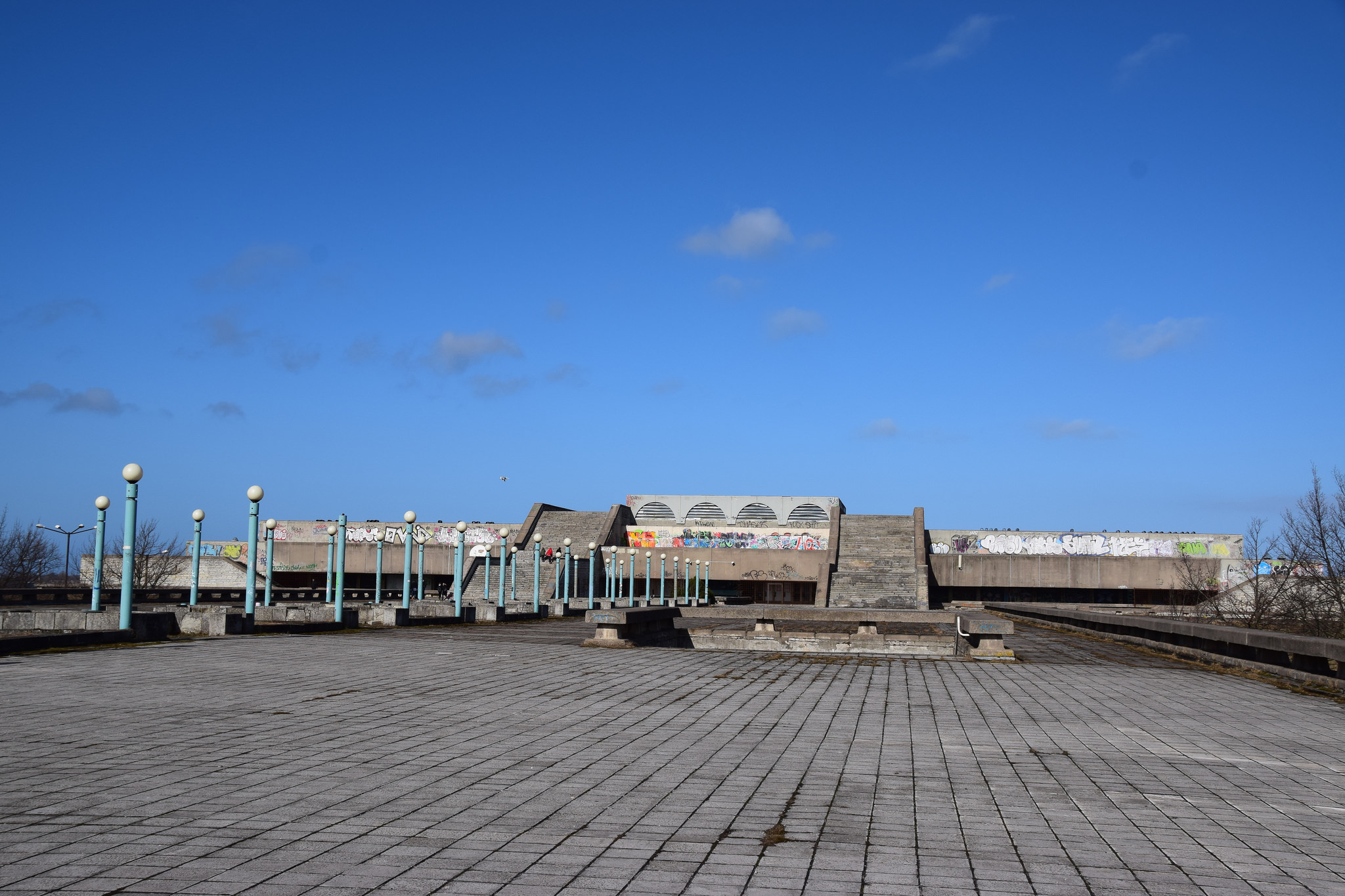
Photo credit: Merlen Aringo courtesy of Visit Tallinn
Linnahall is a strange building. I say this not only because of how it looks but how its fortune has turned. It is as if this building has been jinxed or something. Linnahall gets all the bad press, endless debates on what should be done with it, and no one you talk to wants to admit liking it. But just look at this building! Is it not cool? Underneath the broken glass and spray paint there is something awesome just waiting to happen. Who has millions of Euros for a pet-project in Tallinn left over?
Maybe the bad luck comes from the original name and purpose. Linnahall was called “V. I. Lenin Palace of Culture and Sport” when it opened in 1980 for the Moscow Olympic Games. Tallinn had a small share in the 22nd Summer Olympics – it had the honour of hosting the regatta because Moscow, a land-locked city, could not do it. Estonia got a lot of money to hold the Olympics in style and many projects got off ground that otherwise probably never would have happened. Linnahall was one such project.
But just as the Moscow Olympics were doomed in the long run so was Tallinn’s V. I. Lenin Palace of Culture and Sport.
In essence Linnahall was (and could still be) a concert hall. With seating for 4200 people it saw some of the biggest artists perform on its stage (like Duran Duran or Lou Reed). Raine Karp and Riina Altmäe are the architects behind this one and their vision was all-bold brutalism – a style that you can see being loved and hated all over the world. Yet the aim of the building was not to ruin the view of Tallinn’s old town from the sea and to seamlessly mesh into the urban landscape. It did all that and it was functional. I have a very fond childhood memory of going to see a musical in Linnahall and being overwhelmed more by the building than by the show I was to see. Maybe it’s nostalgia but I would love to see this building restored to its former glory.
If your day in Tallinn starts from the Cruise Ship Port then don’t miss this beauty by just walking by, walk on it! Ask our guides to take you here on our Best of Tallinn tour.
7. Sillamäe, a secret Stalinist city
Photo credit: Kalev Külaase
In Soviet Estonia a city called Sillamäe did not exist. Officially it was not listed anywhere, no map showed it, and if you asked about it then the correct answer was, “Huh? Never heard of this place.” However, where there was supposed to be no city, one surely existed – as a closed and secret city in East of Estonia with a city centre built in pure Stalinist style.
Now, when after the Second World War Estonia became part of the Soviet Union, then a lot of new buildings were needed. Some to cover up war damage and others for new functions in a new state. Who were the people who had to do this mostly? Well, right after the war it was just the old local architects who now needed to please new client – Stalin.
What did Stalin like? Well, it looks like he mostly approved of neo-classical elements like columns, porticos, and pediments. Adding on some hammers and sickles, maybe Lenin and Marx here and there, and ready to go!
The overall combination is called Stalinist. Later, when Nikita Khrushchev came to power, completely different gray block houses were built which were nicknamed Khrushchevkas. But that’s another story.
Sillamäe’s architecture is unique in Estonia – a whole city centre in Stalinist style. This was largely possible because there was almost none of the old pre-II World War Sillamäe left and because Sillamäe became such an important centre for Soviet arms production. Sillamäe had an uranium enrichment plant and thus brought together some of the brightest minds in that field to Estonia. The city thus needed to be impressive and beautiful as well, and it still is. Already in 1949, after it was first built, the city earned an architectural award from the Estonian Soviet Socialist Party’s Board of Ministers as the best settlement of its kind in Estonia. High praise indeed!
No uranium enrichment goes on there now but the city centre is still visually outstanding. You can see it on our Narva & Eastern Bloc day trip.
Cover photo credit: jaime.silva
Did I miss your favourite Soviet-era building in Estonia? Let us know in the comments!
Also, If you are interested in this subject in general then I have a book recommendation – Owen Hatherley Landscapes of Communism. This is a good read and a companion if travelling through post-Soviet Europe.
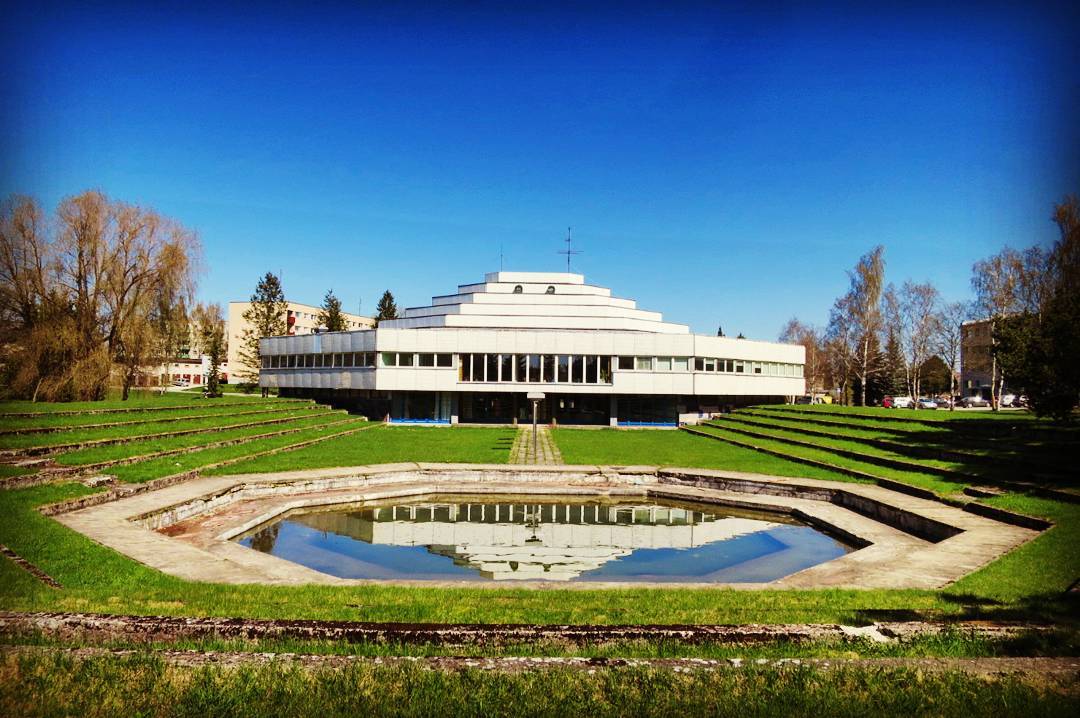
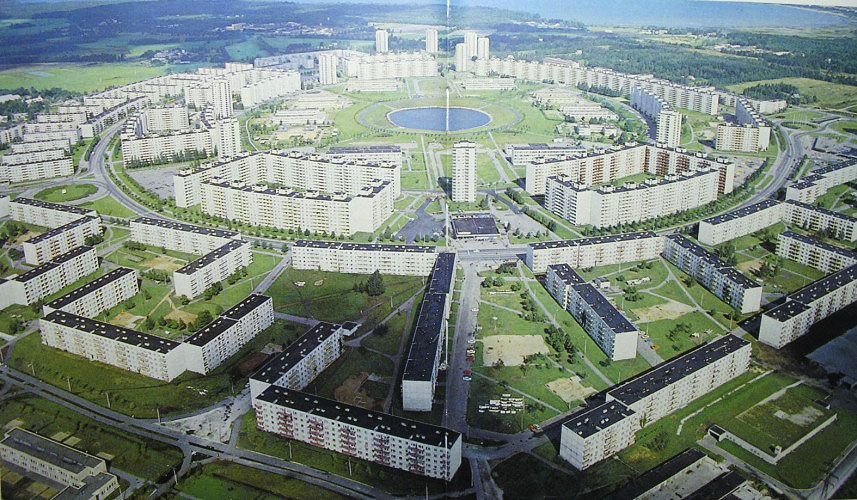
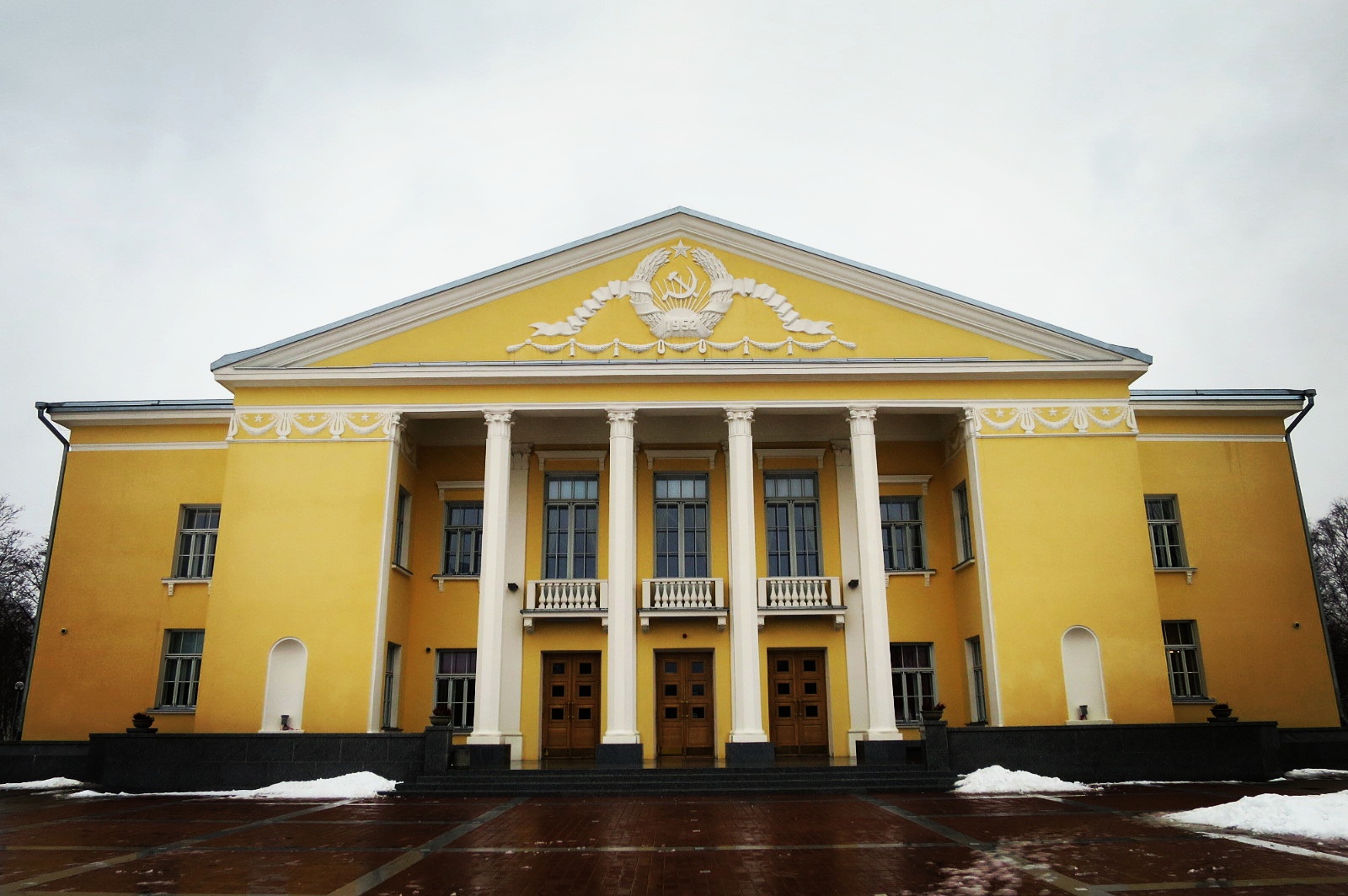


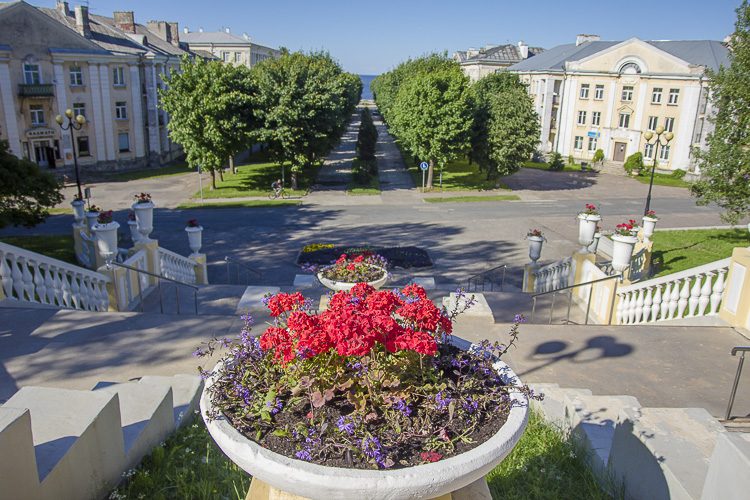

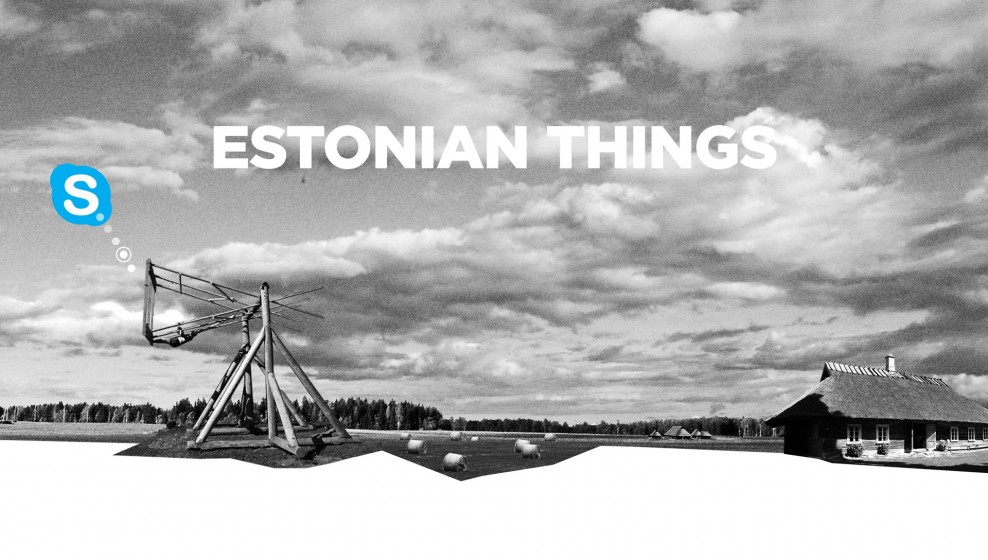

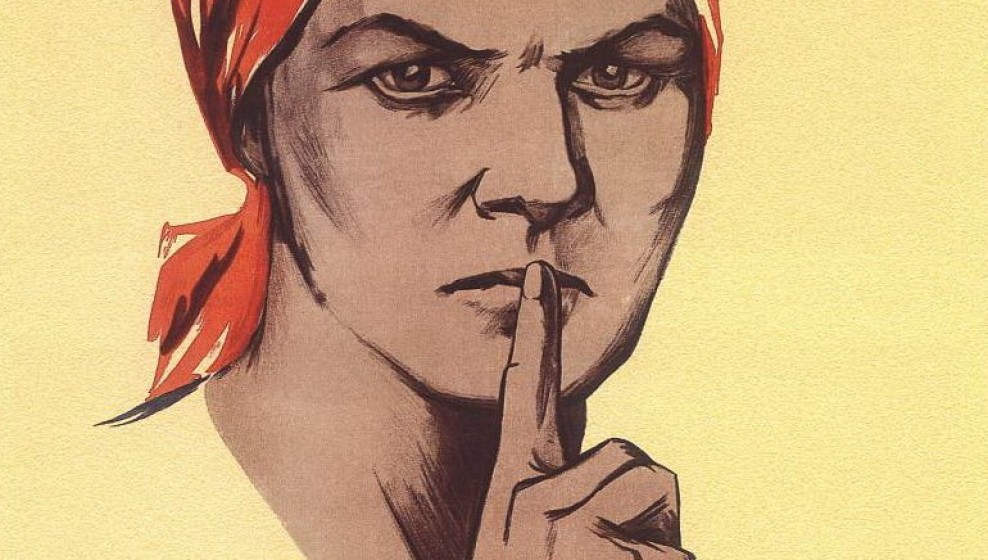

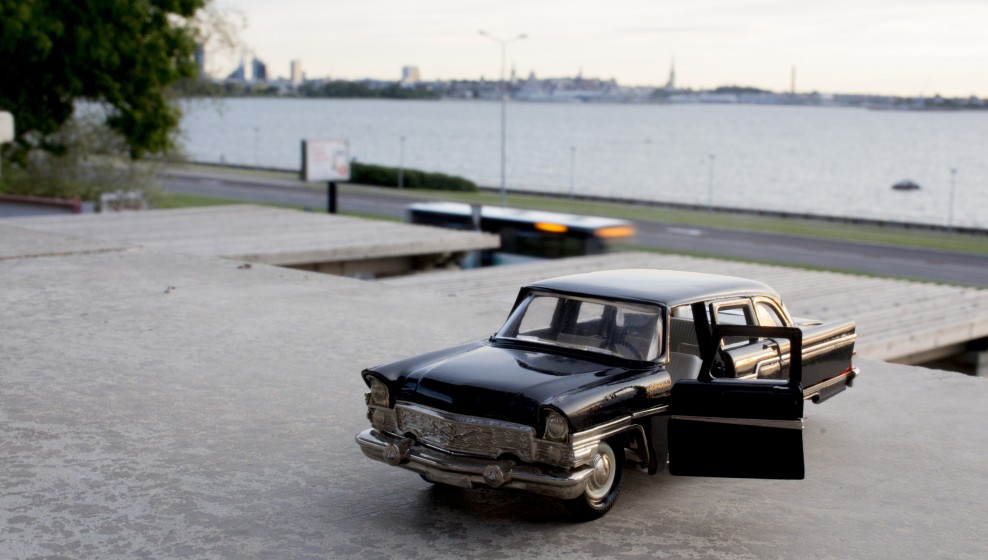
You missed Janeda sovhoostehnikum’s building.
what should I do first if it is my first time?
Hello,
If this is your first time in Estonia than it is easiest to start by walking around Tallinn. Linnahall and National Library are both walking distance from the Old Town. If the old Soviet block is of particular interest to you I would recommend taking this tour: https://www.traveller.ee/tour/narva-and-the-eastern-bloc
All the best and good luck!